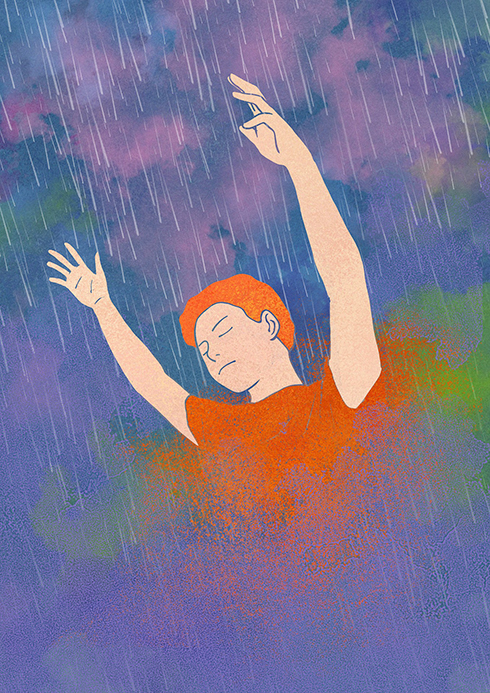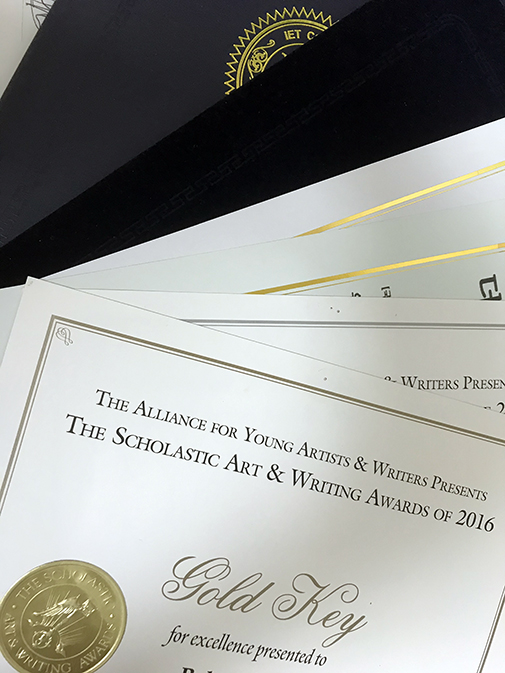
“Take me back to your favorite memory,” the teacher asked.
I nodded, my 8-year old body comfortably engulfed by the wide chair, eyes closed. “I’m at the beach.”
“Think deeper. Do you hear the waves crashing on the shore or smell the salty breeze of the ocean?” As she continued, my beach turned into life as the glow of the candle in front of me melted into the gentle beams of the afternoon sun. “Write it down for me.”
And so, on that one ordinary day in second grade, began my journey in creative writing. From that point on, I remember meeting up with a group of friends and a tutor in the local California library where we poured out our imagination into our journals with large, sloppy handwriting. Whether it be the ‘Optimistic Pencil and Pessimistic Eraser’ or stories of talking mice, my childhood was filled with stories that offered me a chance to create my own reality.
When I moved back to South Korea in fifth grade, I continued to write short stories for fun. One of my fondest memories from elementary school is the notebook my friends and I passed around, writing different parts of a story and piecing them together. A few days ago, I came across these stories and couldn’t help but laugh at our simple plots and sometimes excessive use of onomatopoeia. In retrospect, what I believed to be extremely original stories at the time were (admittedly) mostly cliché versions of an orphan protagonist, heavily inspired by my favorite books at that time: Harry Potter and the Series of Unfortunate Events.
Halfway through middle school, I began to look for ways that I could find my own voice in my writing. How do I view the world? How do I bring my experiences to life on paper? Through my various experiences as a staff reporter for magazines and newspapers including the Spirit, Teen10, and the Korea Herald, I explored different ways I could connect with the world around me through my writing.
The spectrum of books I read widened as I delved into classics, social commentary, plays, and memoirs in high school. The ways authors could bring to life their raw emotions and make broader commentary on the world or humanity through creative writing captivated me. Amongst other methods of writing, I can personally testify that creative writing has the unique ability to immerse readers. History has also testified to the effects of creative writing to move people. For instance, Franz Kafka is often credited as the spark to the Prague Spring, a democratization movement in the USSR dominated Czechoslovakia. With such a potent ability to move people, I wanted to explore ways I could create writing that could cause change.
In my journey to find my own voice, I was thrilled to be awarded the gold and silver key for the Scholastic Art and Writing Awards in 2017 and 2 gold keys in 2019 alongside other writing awards. I am constantly inspired by the many writers I encounter in my literature class as well as student writers and authors I have met in different writing camps such as the Great Books Program at Stanford or the CTY summer camps. Working with unique voices and diverse thematic content showed me different ways I could think outside the box in my own writing.

On that note, my journey as a writer is still far from over. I’ve recently noticed that I haven’t been dedicating as much of my time to write stories as I had before due to school work and extracurricular activities. While passing time in quarantine, I was able to look back and reflect on my writing from years ago and revive my interest in creative writing. As we practice social distancing, I would like to encourage readers to read a book or try writing stories with the 1,000 writing prompts provided by the New York Times and experience the immersion of creative writing! It may offer an exciting escape from the often monotonous reality of quarantine.

Rebecca Kim
Junior (Grade 11)
Seoul Foreign School

